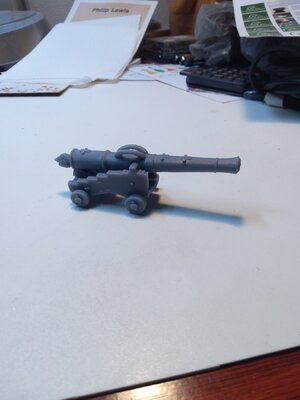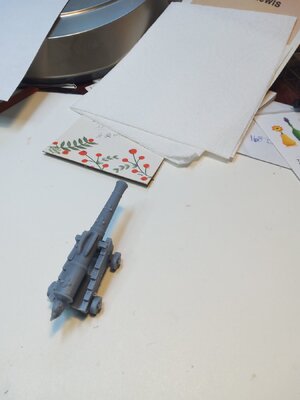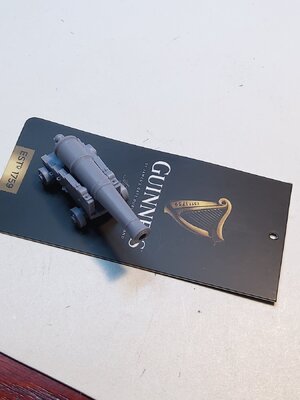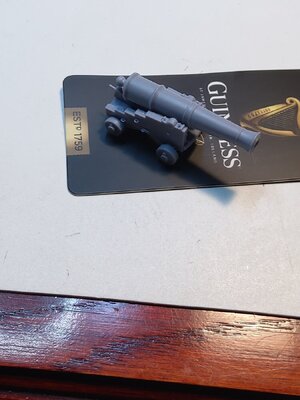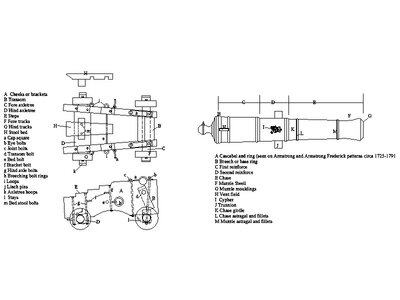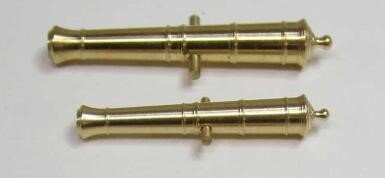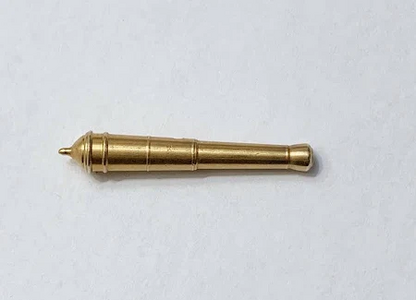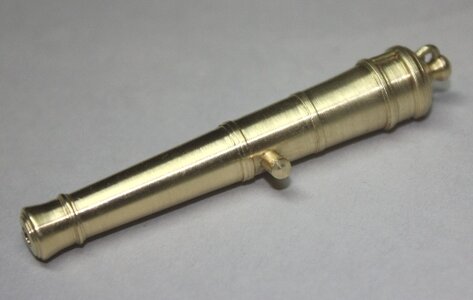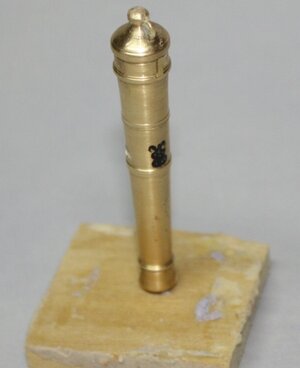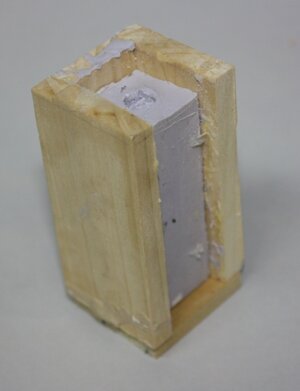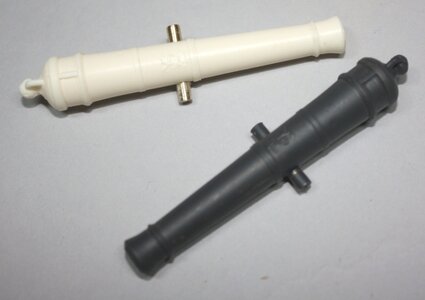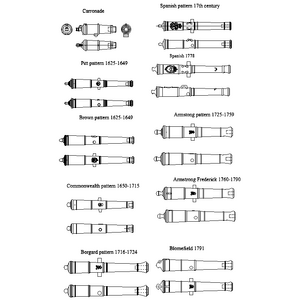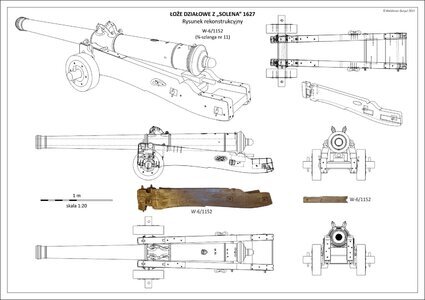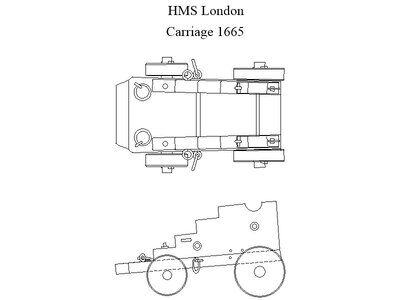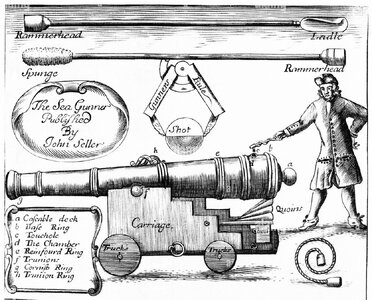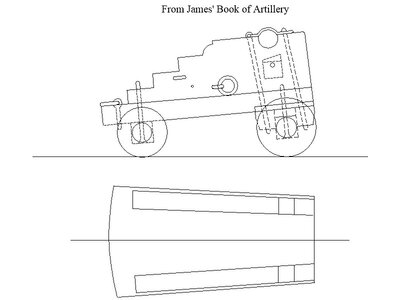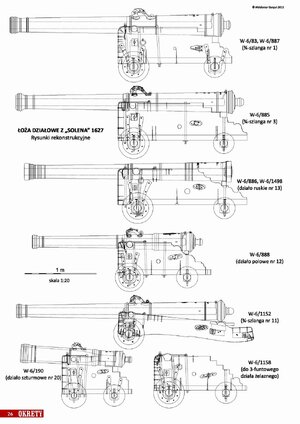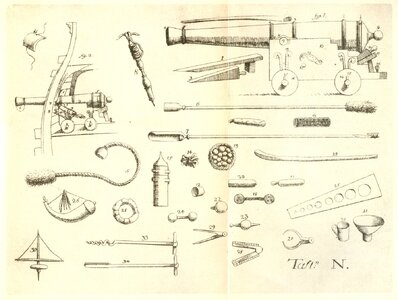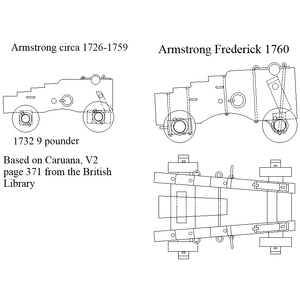Making long gun cannon and carriages
There were no less than seven long cannon patterns in the Royal Navy from about 1625 into the early nineteenth century. Each came in as many as six calibers. Each caliber came in as many as 9 lengths. This amounts to over 300 different barrels. Add just three of our most common scales and there are nearly 1000 different barrels. Add in the Spanish, Dutch, Portuguese and French pattens and there are multiple thousands. It is highly likely that model ship manufacturers cannot provide that many different guns in bronze or brass and make a profit so we as builders have had limited choices.
On the other hand we as model ship builders, can make or acquire any of these thousands of choices with relative ease and at costs that are a relatively low price per piece.
The most common cannon making methods with which I am familiar are below.
Turned brass - The below photo is a home made brass Blomefield cannon before being blackened. Making dozens of these is something I do not want to do again.
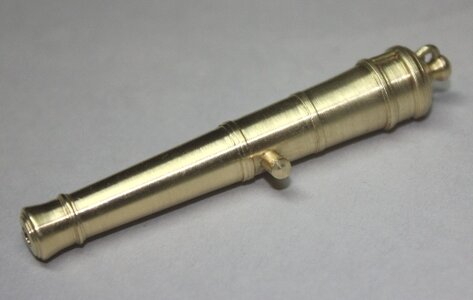
Cast metal: The below is from a popular kit maker. I have no idea what pattern this is as it does not match any pattern I could find in any navy.
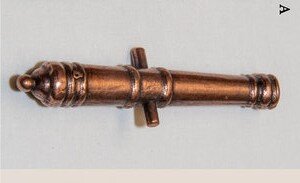
Cast resin: Once the desired pattern/sized barrel is made or purchased it is not difficult to make as many as one needs with a home made silicone mold. The ones below are Blomefields
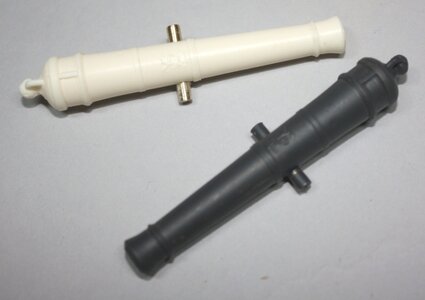
3D printed
Relatively new technology compared to the above methods has made it possible to get any pattern, caliber, length and scale for less cost than any of the above three methods. The one below is an Armstrong Frederick barrel in 1:24 scale.
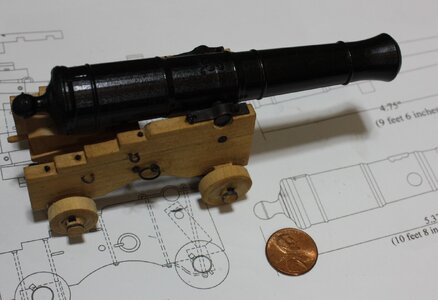
The following posts will go into details of the various methods. As always in our hobby, there are options from which to choose for each of us as our preferences do vary. Hopefully the following information will be useful for each of the methods described.
Allan
There were no less than seven long cannon patterns in the Royal Navy from about 1625 into the early nineteenth century. Each came in as many as six calibers. Each caliber came in as many as 9 lengths. This amounts to over 300 different barrels. Add just three of our most common scales and there are nearly 1000 different barrels. Add in the Spanish, Dutch, Portuguese and French pattens and there are multiple thousands. It is highly likely that model ship manufacturers cannot provide that many different guns in bronze or brass and make a profit so we as builders have had limited choices.
On the other hand we as model ship builders, can make or acquire any of these thousands of choices with relative ease and at costs that are a relatively low price per piece.
The most common cannon making methods with which I am familiar are below.
Turned brass - The below photo is a home made brass Blomefield cannon before being blackened. Making dozens of these is something I do not want to do again.

Cast metal: The below is from a popular kit maker. I have no idea what pattern this is as it does not match any pattern I could find in any navy.

Cast resin: Once the desired pattern/sized barrel is made or purchased it is not difficult to make as many as one needs with a home made silicone mold. The ones below are Blomefields

3D printed
Relatively new technology compared to the above methods has made it possible to get any pattern, caliber, length and scale for less cost than any of the above three methods. The one below is an Armstrong Frederick barrel in 1:24 scale.

The following posts will go into details of the various methods. As always in our hobby, there are options from which to choose for each of us as our preferences do vary. Hopefully the following information will be useful for each of the methods described.
Allan
Last edited:



